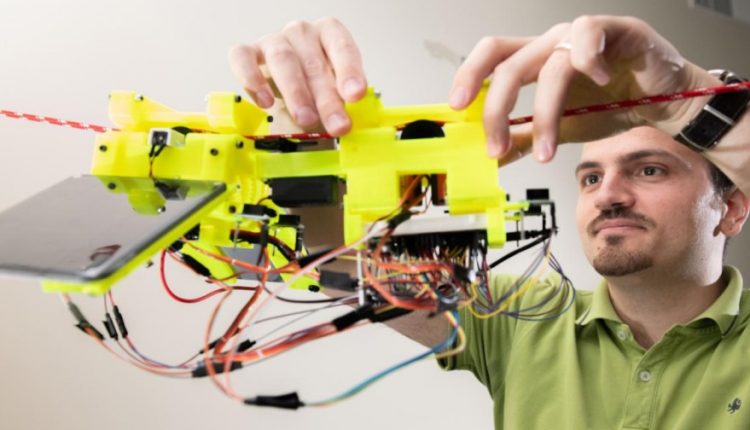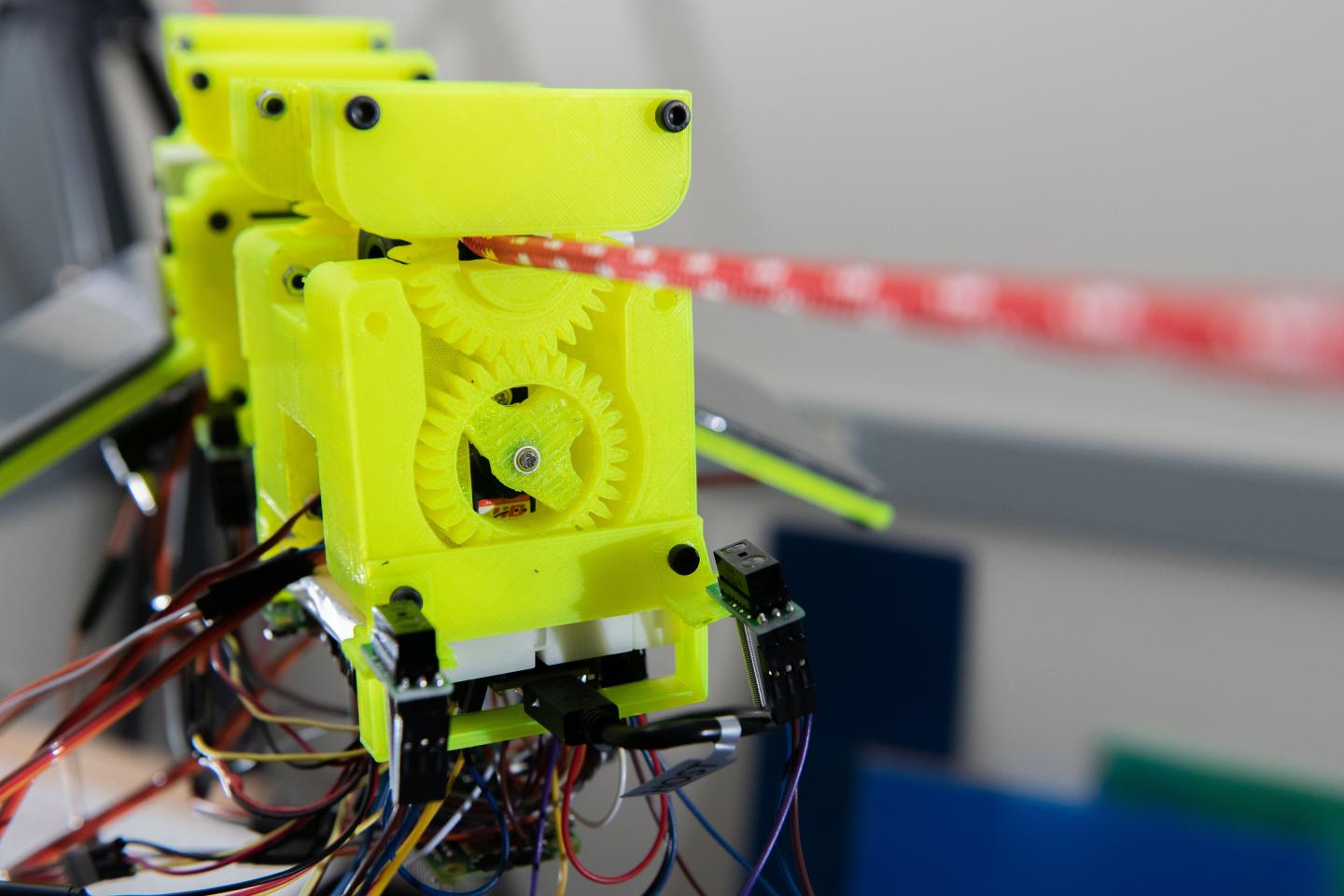
Bots are used extensively now in precision agriculture, environmental monitoring, infrastructure maintenance and certain security applications. Since all these uses require long-term, in-field placements, slow and energy efficient data collection can be better than fast and always needing a recharge.
Electrical engineers at the Georgia Institute of Technology have developed a slow-moving bot powered by a pair of photovoltaic panels and designed to linger in the forest canopy continuously for months. The SlothBot moves only when it must to measure environmental changes—such as weather and chemical factors in the environment—that can be observed only with a long-term presence. The proof-of-concept hyper-efficient robot was described May 21 at the International Conference on Robotics and Automation (ICRA) in Montreal, and may soon be in use among treetop cables in the Atlanta Botanical Garden.

“In robotics, it seems we are always pushing for faster, more agile and more extreme robots,” said Magnus Egerstedt, principal investigator for SlothBot at the Georgia Institute of Technology. “But there are many applications where there is no need to be fast. You just have to be out there persistently over long periods of time, observing what’s going on.”
Sloths are highly energy-efficient, sleeping up to 22 hours a day and able to subsist on as little as a single small potato per day. “The thing that costs energy more than anything else is movement,” Egerstedt said. “Moving is much more expensive than sensing or thinking. For environmental robots, you should only move when you absolutely have to. We had to think about what that would be like.”
Based on what Egerstedt called the “theory of slowness,” Graduate Research Assistant Gennaro Notomista designed SlothBot together with his colleague, Yousef Emam, using 3D-printed parts for the gearing and wire-switching mechanisms needed to crawl through a network of wires in the trees. The greatest challenge for a wire-crawling robot is switching from one cable to another without falling, Notomista said.
“The challenge is smoothly holding onto one wire while grabbing another,” he said. “It’s a tricky maneuver and you have to do it right to provide a fail-safe transition. Making sure the switches work well over long periods of time is really the biggest challenge.”
Mechanically, SlothBot consists of two bodies connected by an actuated hinge. Each body houses a driving motor connected to a rim on which a tire is mounted. The use of wheels for locomotion is simple, energy efficient and safer than other types of wire-based locomotion, the researchers say.
SlothBot has so far operated in a network of cables on the Georgia Tech campus. Next, a new 3D-printed shell—that makes the robot look more like a sloth—will protect the motors, gears, actuators, cameras, computers, and other components from the rain and wind. That will set the stage for longer-term studies in the tree canopy at the Atlanta Botanical Garden, where Egerstedt hopes visitors will see SlothBot monitoring conditions as early as this fall.
The bot will move into sunny spots when its battery needs recharging, and researchers hope to test it in a cacao plantation in Costa Rica that is already home to real sloths. “The cables used to move cacao have become a sloth superhighway because the animals find them useful to move around,” Egerstedt said. “If all goes well, we will deploy SlothBots along the cables to monitor the sloths.”
Source: Georgia Institute of Technology
